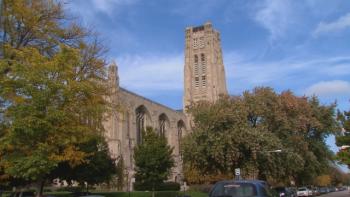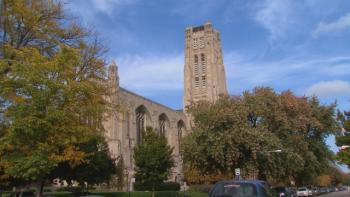Chicago Tonight
Adjuncts and Tenure
Rhyan Kronzer | February 2, 2015
Two main tracks exist for professors in the academic world: tenured and non-tenured faculty. Across the nation, some non-tenured, adjunct faculty members are asking for higher wages, benefits and a more equal system. Can these two levels of professorship continue to exist? Is one becoming more predominant than the other? And what is the effect on the cost and quality of education? We discuss these questions and more with David Figlio, tenured economics professor and director of the Institute Policy Research at Northwestern University, and Denise Cummins, research psychologist and retired adjunct professor from the University of Illinois.
 The Higher Education Divide
The Higher Education Divide
A steady shift in higher education professorship has been taking place over the past two decades and has led some to question the current system of the tenured and non-tenured.
Without mandatory retirement for tenured professors and the continued effort to control costs, universities and colleges have continued to increase the amount of non-tenured professors they employ.
“There has been a steady increase in the use of non-tenured faculty that has been going on for several decades,” said David Figlio, director of the Institute for Policy Research at Northwestern University.
In 2011, approximately half of American college and university faculty were full time. This is down from 77 percent 40 years ago, according to U.S. Department of Education data.
But, across the nation, non-tenured professors in higher education are looking to stem the tide and even unionize in an attempt to receive higher wages and benefits.
Part-time faculty median pay per course at all two and four-year schools in 2010 was about $2,700, according to a study by the Coalition on the Academic Workforce.
The move to non-tenured faculty is partly attributed to Congress allowing an exemption of the 1986 Age Discrimination Act to expire in 1994. The exemption allowed colleges and universities to enforce mandatory retirement of faculty members at age 70. As a result, some universities have pulled back on offering tenure-track positions.
Another factor that contributes to the equation is the number of Ph.D.s being granted and a lack of full-time opportunities in academia.
“There are more Ph.D.s created each year than there are positions in academia for new Ph.D.s. There is a big imbalance,” said David Card, professor of economics at University of California, Berkeley. “But everyone needs Ph.D. students to do grading, conduct labs, and work as teaching assistants. Universities are kind of running a bit of a scam in that sense.”
In an attempt to bring attention to the issue, non-tenured professors across the nation are organizing an adjunct walkout day scheduled for Feb. 25.
While some seek public attention or unionization, others look to the courts for a change in state policy.
A case first brought forth by Mona Davids of the New York City Parents Union claims the state’s teacher tenure laws deny students their constitutional right to a basic education. Davids was later joined by former CNN anchor Campbell Brown. The cases were combined and a hearing to determine the legal standing of the case took place Jan. 15.
A decision on whether the case will go to trial has yet to be made.
For additional reading:

